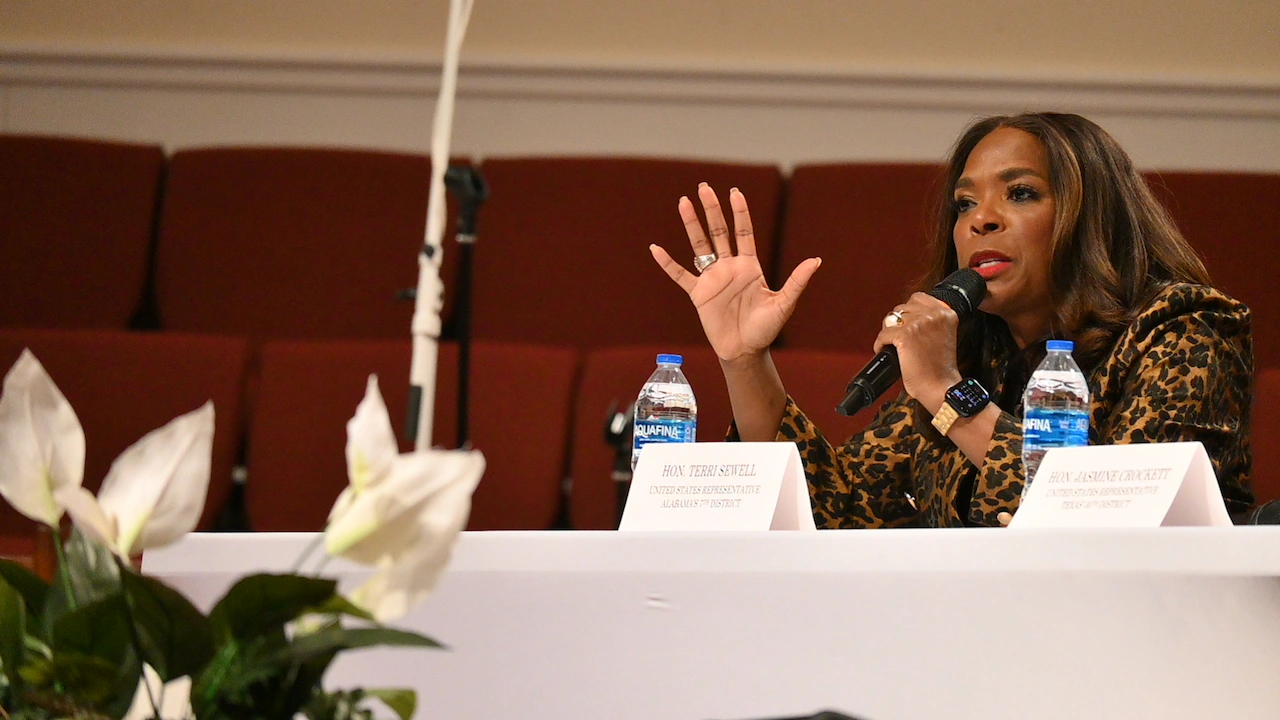Copyright AL.com

When Shomari Figures took the oath of office last January, a first occurred in Alabama’s 205-year history: two Black politicians from Alabama were elected to the U.S. House at the same time. But after a U.S. Supreme Court hearing last week, pundits are eyeing the likely return of a scenario that has not occurred in more than 30 years: Alabama may soon have zero Black Democratic representation in Congress. Following a two-and-a-half-hour hearing on October 15 in Washington, D.C., the conservative-leaning Supreme Court signaled it may be poised to gut Section 2 of the 1965 Voting Rights Act in a nearly three-year-old redistricting case out of Louisiana. Section 2 prohibits election practices that deny or limit voting rights based on race, including racial gerrymandering. The ramifications are expected to reach deep into Alabama, where reconsideration of the state’s congressional districts could follow depending on how the court rules. Two years ago, the Supreme Court ruled that Alabama’s congressional map violated Section 2 of the Voting Rights Act. However, political scientists believe that a decision in Louisiana v. Callais could make it more difficult to prove racial discrimination in redistricting. That could lead Alabama lawmakers to push new congressional maps with district lines drawn to ensure only Republicans are elected to the state’s seven congressional seats. The Louisiana case involves a group of white voters challenging a congressional map that creates two majority-Black districts. Louisiana has six congressional districts. “The Republicans know what they are doing,” said Charles Bullock III, a political science professor at the University of Georgia and a scholar on Southern politics. “They may not want to acknowledge it, but they know what they are doing. The civil rights folks also see it right down the road.” Timing impact The looming question is about timing and whether the Supreme Court will issue a ruling in the Louisiana case that could lead to a shift of 12 to 19 Southern congressional seats from Democratic to Republican in 2026. Deadlines and political primaries are a factor, and the timing is likely too tight for an impact during the 2026 midterms. In Alabama, the filing deadline to qualify as a major party candidate for the May 19 primary is Jan. 23, 2026. In Louisiana, Republican Gov. Jeff Landry has called a special session starting Thursday to focus on election-related matters and potentially modify deadlines in anticipation of the court’s decision. National reports suggest the Supreme Court could rule on the Louisiana case as early as January or as late as summer 2025. Two of the 12 seats that experts believe could flip to Republicans if Section 2 is invalidated are in Alabama: 7th Congressional District, Alabama’s oldest majority-Black district, which has elected Black Democratic members of Congress since 1993. It has been represented by U.S. Rep. Terri Sewell of Birmingham since 2011. The district includes parts of Birmingham, Tuscaloosa and Montgomery, all of Selma, and many rural, majority-Black counties in southwestern Alabama. 2nd Congressional District, held by Figures since January 2025. The district was redrawn from a safe Republican seat to an “opportunity district” giving Black voters a chance to elect their preferred candidate. The map was instituted by a panel of federal judges after the Supreme Court ruled in a 5-4 decision in 2023 that Alabama had violated Section 2 with the Legislature’s original map. The new district includes most of Mobile, stretches east through the southern Black Belt, and includes most of the Montgomery metropolitan area. “The implications for other states will be significant even if not immediately evident,” said Jason Mazzone, a law professor at the University of Illinois Urbana-Champaign. David Wasserman, editor with the Cook Political Report, said the Democratic seats at risk include the two in Alabama, two in Louisiana, and others in Tennessee, Mississippi, North Carolina, South Carolina and Georgia. Two additional seats in Florida could also be targeted, he said. “I don’t anticipate the Supreme Court ruling in time for wholesale changes across the South in 2026,” Wasserman said. “That said, if there is a ruling to strike down Section 2 of the Voting Rights Act, it could give Republicans almost a lock to take back the House in 2028, if they lose it in 2026.” So far, the prospects, even with aggressive redistricting in Republican-led states like Texas, appear unfavorable for the GOP, which currently holds a three-seat majority in the U.S. House. “A lot of that depends on how these redistricting wars unfold from state to state,” Wasserman said. “We’re looking at a net boost of Republicans of six seats from redistricting from their current three-seat cushion that would triple in November.” He added, “But even with that (advantage), Democrats have a great opportunity to win the House. They could do well enough in the states not redrawing their maps to pick up control of the House.” So-called swing districts, which do not exist in Alabama, will determine control of the House during the midterms. “In this kind of environment, considering Trump’s approval rating is in the low to mid-40s, a district he carried by less than 10 points should be considered a risk,” Wasserman said. “Two dozen Republicans hold seats that fit that category.” Ramifications and reactions The U.S. Justice Department is arguing that plaintiffs bringing a Voting Rights Act violation must demonstrate that voters cast ballots differently based specifically on race, decoupled from their political affiliation. Liberal Justice Sonia Sotomayor said the approach would effectively gut Section 2. Susan Pace Hamill, professor emeritus of law at the University of Alabama School of Law, said the Supreme Court’s decision could harm the institution’s declining approval rating. Gallup polling shows 42 percent approval of the Supreme Court’s job performance, with public trust dropping from 68 percent in 2019 to 44 percent in August 2024. “In addition to thwarting progress in voting rights desperately needed in Alabama, this will cause great confusion and further erode the confidence in the Supreme Court as a separate branch, independent from the turmoil of the political parties,” said Hamill. Democratic and Republican lawmakers in Alabama are watching the Supreme Court case closely, preparing for what might come next. Sewell has been outspoken in her support of preserving Section 2, warning that gutting the Voting Rights Act would “take us back to a dark time in our nation’s history” when minority representation was restricted. Sewell is a sponsor of the John Lewis Voting Rights Act, a federal bill that would, among other provisions, restore the preclearance requirements for Southern states that were struck down by the Supreme Court in 2013. “We are 62 strong and are only 62 strong because of the Voting Rights Act of 1965,” she said, referring to the current size of the Black Congressional Caucus. That number is at an all-time high. With five Black Republicans, the total number of Black members in Congress is 67. In the early 1990s, when Alabama’s first majority-Black congressional district was created, there were only 26 Black members in Congress. “We must do everything in our power to make sure it’s not stripped and ripped from the pages of our Constitution and our law,” Sewell said at a news conference in Washington, D.C., last week. The Alabama Republican Party, led by Chairman John Wahl, filed a brief in the ongoing litigation in Allen v. Milligan, arguing that racial politics should not handicap Republicans from winning congressional seats. Alabama Attorney General Steve Marshall, in a statement to AL.com, said states are placed in an “impossible position” in redistricting cases because “partisan actors can sue a state to demand race-based districts” to obtain political goals. In Alabama and across the South, race plays a dominant role in politics. Black voters overwhelmingly support Democrats, while white voters largely back Republicans. White residents make up about 74 percent of Alabama’s population, while Black residents comprise about one-fourth. While exit polling is limited in Alabama, past elections have shown stark racial divides in voting patterns. In 2017, Democratic U.S. Sen. Doug Jones won nearly 100 percent of Black women’s votes in a special election where he defeated Republican Roy Moore, who received 72 percent support from white men. Marshall said he is hopeful the Supreme Court ends race-based redistricting as outlined in Section 2. He referenced the court’s 2023 decision that struck down affirmative action in college admissions. “It should declare race-based redistricting unconstitutional now,” Marshall said. Section 2’s application to redistricting stems from a prior Alabama case. In Mobile v. Bolden (1980), the Supreme Court ruled that Section 2 only applied to intentional discrimination. That case challenged Mobile’s former system of at-large commissioner elections, where all commissioners were white. In 1982, Congress amended the Voting Rights Act to clarify that voters could challenge electoral maps that diluted the voting power of communities of color, even without proving intent. In 1985, Mobile changed its government structure to the current mayor-council form with seven districts, three of which are majority Black. The new structure requires a supermajority council vote on major issues. Following the 1990 U.S. Census, Alabama created its first majority-minority congressional district. Earl Hilliard became the first Black man to win a seat in Congress from Alabama since Reconstruction. Sewell, speaking at the Black Caucus news conference, called the Supreme Court’s consideration of the Louisiana case “absurd and dangerous.” Still, she remains ready for a political fight, declaring that more Black candidates will be elected from Alabama. “I may be the first Black congresswoman from Alabama, but I damn sure won’t be the last,” she said.



